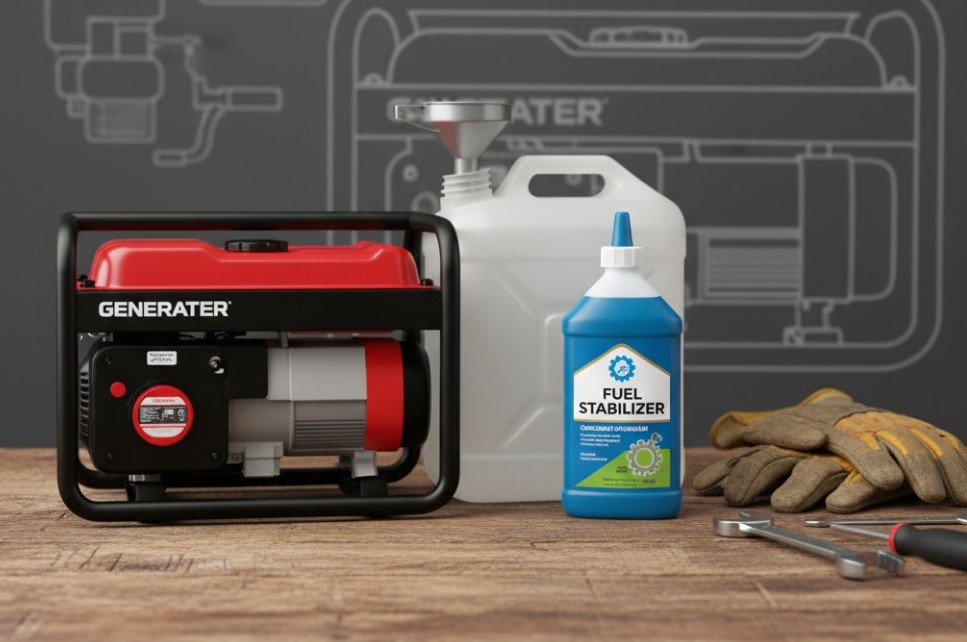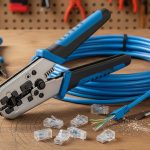
In a world increasingly dependent on consistent power, a generator is more than just a piece of equipment; it’s a critical lifeline. Whether you own a portable unit for tailgating and construction sites or a standby system to weather the next storm, your generator’s reliability is paramount. Yet, many owners overlook one of the simplest and most crucial aspects of maintenance: the use of a fuel stabilizer. This humble additive is the unsung hero that can make the difference between a generator roaring to life when disaster strikes and a frustrating, silent failure. Understanding the importance of using fuel stabilizers for generators is key to ensuring your investment—and your power supply—is protected, especially during long periods of inactivity. This comprehensive guide will delve into the science of fuel degradation, the mechanics of how stabilizers work, and the precise steps you need to take to safeguard your generator’s engine.
The Silent Enemy: Understanding Fuel Degradation in Generators
Generators, by their nature, are often used sporadically. They sit idle for weeks or months, waiting for the next power outage or camping trip. This downtime is the enemy of the fuel left in their tanks and fuel systems. Gasoline and diesel are not static, non-perishable liquids; they are complex chemical compounds that begin to break down almost immediately upon leaving the refinery, a process that is accelerated by heat, air, and moisture.
Gasoline’s Short Shelf Life
Modern gasoline, particularly the common Ethanol-blended variety (E10), has a surprisingly short shelf life. Without treatment, gasoline can begin to degrade in as little as 30 to 90 days. Several factors contribute to this rapid decline:
- Oxidation: When gasoline is exposed to air (oxygen), the hydrocarbons begin to react, creating new, heavier chemical compounds. This process forms sticky, varnish-like deposits, gum, and sludge. These deposits are the primary cause of clogs in small engine parts like the carburetor, fuel lines, and injectors.
- Volatile Component Evaporation: Gasoline is a mix of light and heavy hydrocarbons. The lighter, more volatile components—which are crucial for easy starting and proper ignition—evaporate over time, especially from vented fuel tanks or storage containers. The remaining ‘stale’ fuel is harder to ignite, leading to hard starts, rough idling, or a complete no-start condition.
- Ethanol and Phase Separation: The inclusion of ethanol (alcohol) in most gasoline dramatically complicates storage. Ethanol is hygroscopic, meaning it readily attracts and absorbs moisture from the air. When the fuel absorbs too much water, the ethanol and water mixture separates from the gasoline and sinks to the bottom of the fuel tank. This is known as phase separation. The water/ethanol layer is corrosive and can damage metal components, gaskets, and seals. If this separated mixture is drawn into the engine, it can cause severe damage and will not combust correctly, essentially leaving the engine to run on water and ethanol.
Diesel Fuel and Microbial Contamination
While diesel fuel generally has a longer shelf life than gasoline, it faces a different set of challenges, especially in storage tanks for larger standby whole-house generators.
- Oxidation and Sludge: Like gasoline, diesel can oxidize, forming sludge and varnish, though typically at a slower rate.
- Microbial Growth: The biggest threat to stored diesel is the growth of bacteria, fungi, and algae. These microbes live in the water layer that settles at the bottom of the tank and feed off the hydrocarbons in the fuel. Their waste products form a slimy residue that clogs filters, lines, and injectors. This is a common and costly problem in long-term diesel storage.
What is Fuel Stabilizer and How Does It Work?
A fuel stabilizer is a chemical additive specifically engineered to counteract the natural degradation process of fuel, significantly extending its usable life. It is not a miracle cure for already-bad fuel, but a powerful preventative measure. The stabilizer’s formulation typically includes a blend of key components, each serving a vital role in fuel preservation.
The Three Pillars of Fuel Stabilization
A quality fuel stabilizer works through a three-pronged chemical approach:
- Antioxidants: These compounds bond with the fuel molecules, preventing them from reacting with oxygen. By slowing down or halting the oxidation process, antioxidants effectively stop the formation of varnish, gum, and sludge, keeping the delicate fuel system components clean and free-flowing.
- Corrosion Inhibitors: These agents create a protective layer on the metal surfaces within the fuel tank, lines, and carburetor. This barrier is essential for protecting against the corrosive effects of moisture and the acidity that can develop as fuel degrades.
- Metal Deactivators/Dispersants (Especially for Ethanol Fuels): For gasoline, particularly E10, stabilizers often include agents that either disperse water molecules to prevent them from pooling at the bottom of the tank (preventing phase separation) or contain components that de-activate the metal surfaces of the fuel system, which can sometimes act as a catalyst for fuel degradation.
By introducing a stabilizer, you are essentially hitting the pause button on the chemical aging of your fuel, ensuring that when you need to start your generator, the gasoline or diesel is still highly combustible and clean.
The Critical Benefits of Stabilizing Generator Fuel
The reasons to use a fuel stabilizer go far beyond simple convenience. They are directly tied to the performance, longevity, and readiness of your generator.
1. Ensured Engine Readiness and Reliable Starting
A generator’s primary purpose is to provide power when the grid fails, making reliability its most important feature. A fuel stabilizer ensures that the fuel remains in its optimal state for easy ignition, even after months of storage. This is particularly crucial for emergency power. You don’t want to be troubleshooting a clogged carburetor in the middle of a storm. A stabilized tank means a quick, guaranteed start.
2. Protection of Sensitive Fuel System Components
Small generator engines, especially portable models, often utilize a carburetor with extremely fine passages and jets. The sticky residue from old, oxidized fuel can quickly gum up these tiny openings, leading to:
- Rough running or surging.
- Loss of power.
- A complete engine failure.
Modern fuel-injected engines are also at risk, as varnished fuel can clog precise fuel injectors. Stabilizer prevents these deposits from ever forming, keeping the entire system lubricated and clean. This preventative measure is far less expensive and time-consuming than a professional carburetor cleaning or injector replacement.
For more essential generator maintenance tasks, you can check out this comprehensive guide: Generator Maintenance Checklist.
3. Extension of Fuel Shelf Life
The biggest practical benefit is the extension of your fuel’s shelf life. While untreated gasoline may only last a few months, a high-quality fuel stabilizer can keep it fresh and usable for up to 12-24 months, and sometimes even longer, depending on the product and storage conditions. This is invaluable for emergency fuel stores and the fuel left in the generator’s tank between uses, saving you the hassle and cost of constantly rotating or disposing of old fuel.
Image Instruction (AI Prompt): A clear, close-up image of a generator’s carburetor (labeled “Clean”) next to a second, identical carburetor covered in dark, sticky, brown varnish and residue (labeled “Clogged”). Use a subtle blue-to-red color gradient behind the two carburetors to symbolize the difference between a functional and a damaged engine component.
4. Minimizing Corrosion and Rust
The corrosion inhibitors in the stabilizer protect the metal parts of the fuel system from rust, which is particularly important in regions with high humidity. Rust particles can break off and travel through the fuel system, causing mechanical abrasion and blockages. By fighting moisture and rust, stabilizers preserve the structural integrity and smooth operation of the tank and fuel lines.
When and How to Use Fuel Stabilizer the Right Way
Using a fuel stabilizer is a straightforward process, but timing and adherence to instructions are critical for maximum effectiveness. A common mistake is adding the stabilizer too late.
The Golden Rule: Treat Fresh Fuel Early
A fuel stabilizer works by preventing degradation—it cannot reverse it. Therefore, the golden rule is to treat your fuel immediately after you purchase it. Whether you are filling up the generator’s tank or a spare fuel can, the stabilizer should be added while the fuel is as fresh as possible.
Step-by-Step Application Guide:
- Measure Correctly: Always read the stabilizer manufacturer’s instructions. The dosage is typically based on the amount of fuel being treated (e.g., 1 ounce per 2.5 gallons). Use a clean measuring container to ensure accuracy.
- Add to the Tank/Can: Pour the measured stabilizer directly into the fuel tank of the generator or the storage can.
- Add Fresh Fuel: Top off the generator’s fuel tank with fresh gasoline or diesel (or fill your storage can). This helps the stabilizer quickly mix and disperse throughout the fuel.
- Circulate the Treated Fuel: This is a crucial, often-missed step. Start the generator and let it run for approximately 5 to 10 minutes. This allows the newly treated fuel to circulate completely through the fuel lines, fuel pump, carburetor, or fuel injectors. If you skip this, the untreated fuel already residing in the carburetor bowl or injectors will still go stale and cause clogs.
- Secure and Store: After circulation, your generator is ready for storage. Ensure the fuel cap is tightly sealed to minimize air exposure.
For temporary storage (less than one month), treating the fuel is often sufficient. However, for long-term storage (several months or a full season), especially with gasoline engines, many experts still recommend performing the stabilization process and then shutting off the fuel valve and letting the carburetor run dry to completely clear it of any remaining fuel, even if stabilized. Consult your generator’s owner’s manual for its specific storage recommendations.
Choosing the Right Stabilizer for Your Generator
Not all stabilizers are created equal, and the type of fuel your generator uses will dictate the best product.
Gasoline Stabilizers
When shopping for a gasoline fuel stabilizer, look for one that explicitly mentions protection against ethanol-related problems, such as phase separation and corrosion. Products designed for marine use (often containing stronger water dispersants) are an excellent choice for any equipment that may sit idle for long periods, including generators. The market offers products that provide protection for one to two years, which is ideal for standby or emergency fuel storage.
Diesel Stabilizers and Biocides
Diesel generators require a different approach. The best diesel stabilizers will include:
- Stabilization Agents: To slow down oxidation and sludge formation.
- Biocides: Crucially, these chemicals kill any existing microbial growth (bacteria, fungi) and prevent future contamination, which is the primary threat to stored diesel.
If you own a large diesel standby generator, a regular treatment with both a stabilizer and a biocide (or a product containing both) is essential to maintain the fuel’s quality over the long haul. Considering the investment, you want to be sure you are using one of the best-whole-house-generators on the market.
Image Instruction (AI Prompt): A clean, modern 5-gallon red fuel can for gasoline next to a clear bottle of blue-colored fuel stabilizer. The background should be a neat garage or shed with a portable generator visible in the distance, emphasizing preparedness. The focus should be on the can and the bottle.
Common Misconceptions About Fuel Stabilizers
Despite their benefits, fuel stabilizers are often misunderstood, leading to mistakes in their use:
Misconception 1: Draining the Tank is Better
While draining the fuel tank and running the engine dry is a viable storage method, it is often messy, wasteful, and introduces new problems. Draining leaves the tank and fuel system empty and exposed to air and moisture, which can accelerate the corrosion and rust of bare metal surfaces. Furthermore, it completely removes the lubricating and protective qualities of the fuel. Fuel stabilizers offer a cleaner, less messy, and often more protective solution for most owners.
Misconception 2: They Restore Old Gas
A stabilizer is a preventative agent, not a restorative one. Once fuel has started to degrade—turning dark, smelling sour, or forming noticeable deposits—a stabilizer cannot undo the chemical process. It can only slow down further degradation. The key is to add it to fresh fuel.
Misconception 3: Any Stabilizer Will Do
As discussed, there is a difference between gasoline and diesel stabilizers, and various brands offer different levels of protection and shelf life. Using a cheap or inappropriate stabilizer may offer a false sense of security. Always verify the product’s intended use and duration of protection to ensure it meets your generator’s needs and storage requirements.
Final Thoughts
The importance of using fuel stabilizers for generators cannot be overstated. When you invest in a generator, you are purchasing reliability and peace of mind. A bottle of high-quality fuel stabilizer is an extremely small investment compared to the cost of replacing a clogged carburetor, repairing damaged fuel lines, or, most critically, being left without power when you need it most. It is an essential component of a smart, proactive maintenance plan.
Don’t wait for the fuel to go bad or the next outage to realize the mistake. Adopt the simple practice of stabilizing your fuel every time you fill your generator’s tank or storage cans. By doing so, you ensure that your generator’s engine remains clean, protected, and—most importantly—ready to deliver power the instant you demand it.
Amranul is a highly experienced product review writer with a passion for helping readers make smart, informed purchasing decisions. Since 2018, he has specialized in thoroughly researching and analyzing a wide range of products to deliver honest, in-depth reviews. Amranul combines technical accuracy with clear, engaging writing to break down complex product features and highlight true user value. Look for his reviews to find reliable information and expert insights you can trust before you buy!





